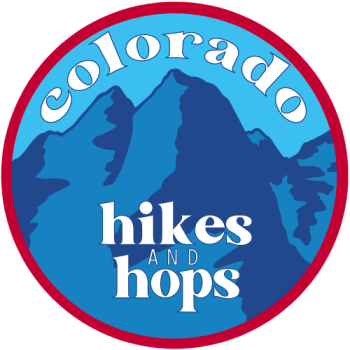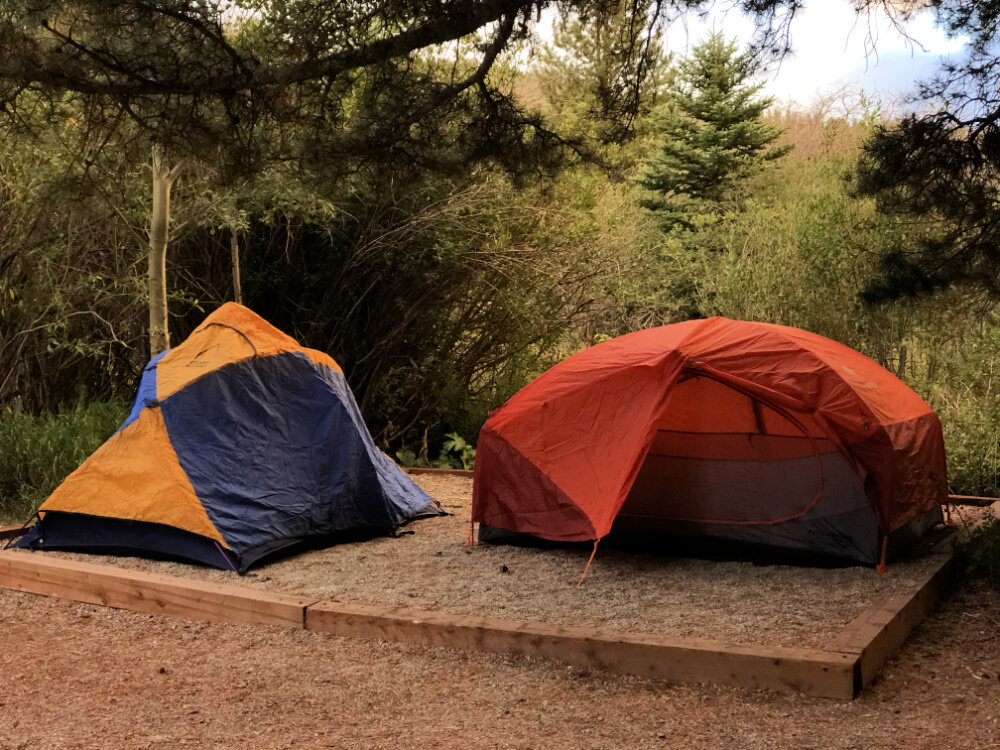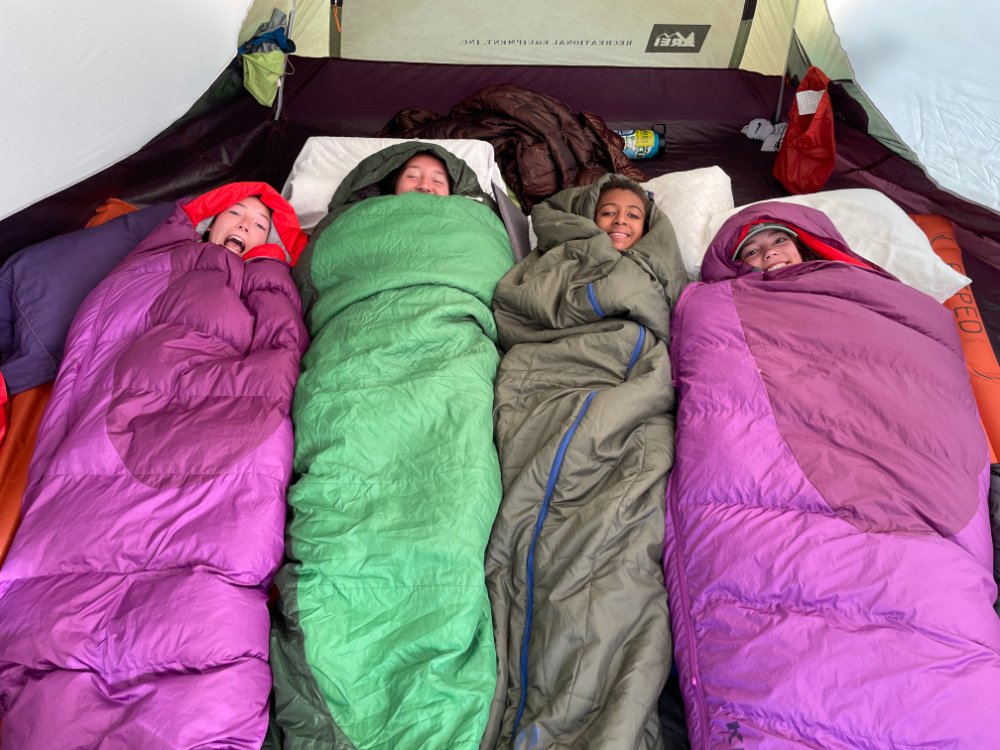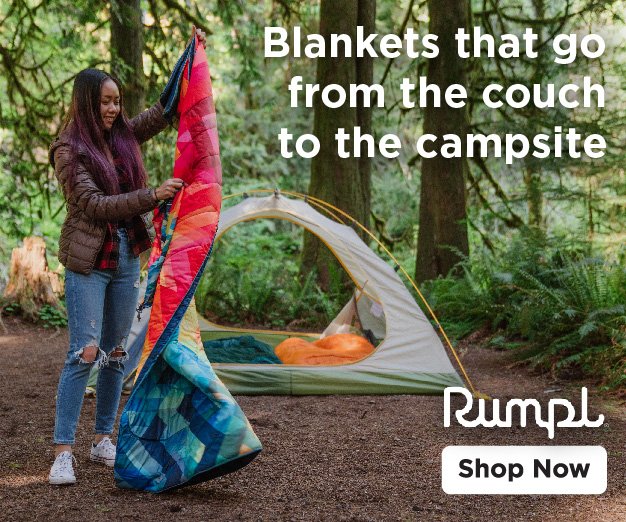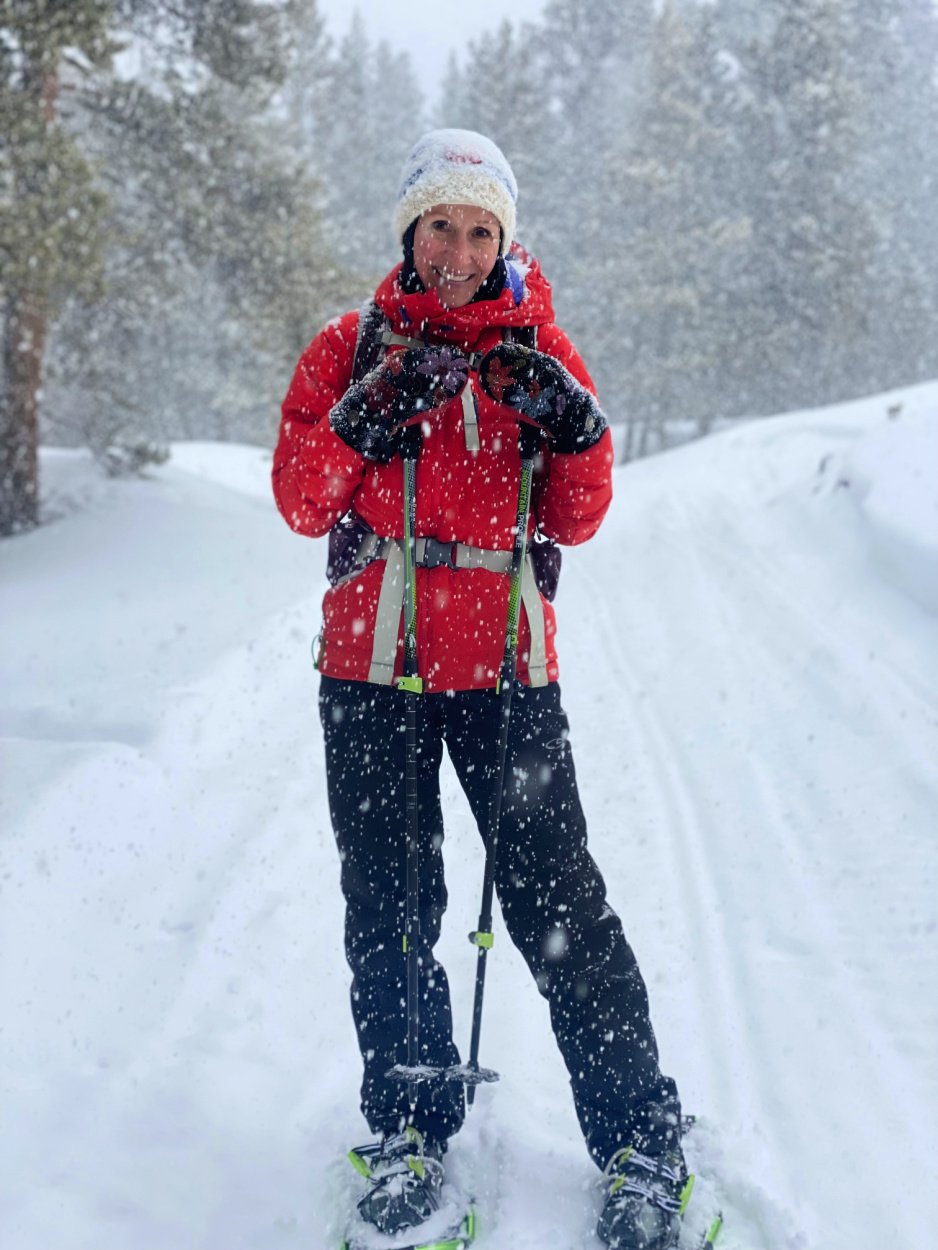How to Go Winter Camping in Colorado
This post contains affiliate links. This just means if you click through and make a purchase, we make a small commission, at no extra cost to you. Thanks for supporting this small business!
Tent camping in winter is wonderful and peaceful when you show up well prepared
Conquer the Cold: Clever Hacks and Essential Gear for Winter Camping in Colorado
As the crisp winter air sets in, the allure of winter tent camping beckons to adventurers seeking a unique outdoor experience. While the biting cold and frosty conditions may seem daunting, with the right gear and know-how, you can conquer the cold and create unforgettable memories in the snow-draped wilderness.
In this guide, we'll delve into the essential gear and clever practices that will elevate your winter camping escapades to a whole new level of comfort and enjoyment.
From insulated sleeping bags and the right clothing to ingenious tips for keeping warm and cozy, we've got you covered. Whether you're a seasoned winter camper or a newbie braving the chill for the first time, this article is packed with practical insights and recommendations to ensure a safe and enjoyable winter camping experience.
Embrace the tranquility of snowy landscapes and head out on an adventure unlike any other, armed with the knowledge and gear to make it an unforgettable journey into a winter wonderland.
Snowshoeing, cross-country skiing or Colorado hiking trails coupled with winter camping adds a new dimension to your time in the outdoors.
This article was co-written with helpful advice from Derek Edwards.*
The Allure of Winter Tent Camping
There’s nothing quite like emerging from your tent and having a hot cup of camp coffee as you look out over a fresh snowfall. The views – and the quiet – make the little extra bit of planning worth the effort.
And since fewer people are out in the Colorado campgrounds and on the trails, you’ll have a lot more elbow room and solitude with your friends and family, making winter tent camping altogether a different and wonderful experience.
Let’s dive into winter camping hacks and tips for a successful trip.
Winter camping in Colorado can lead to great snow shoe adventures.
Get the Lay of the Land
For a great winter camping trip, it helps to know what you’re getting into. Depending on where you go, you may see extra rain, frigid temperatures, or snow.
Weather can affect the trails you plan to hike, as well. You may need extra sun protection as the sunlight reflects off snow. You may need to be ready for hiking on slicker ground.
So check the weather forecast for the days you’re going to be gone. A glance at the forecast can help you figure out how much to layer up (more below) and if you should bring spikes or crampons, snowshoes, and hiking poles.
Choosing the Perfect Winter Camping Location
Having an appropriately-rated tent is important, but that’s not the only thing you can do to help stay warm. Pitching the tent in an appropriate area helps, too. You want to stay protected from the wind, so don’t perch up on a mountaintop, as dramatic and fun as it may be. At the same time, you don’t want to be down in a valley, because cool air sinks.
Know the elevation of your campsite and have a Plan B campsite picked out as well. Read reviews about the campground when possible. Go to the national forest page to read about road closures, campground availability and closures before you go.
How to find free camping near you
Did you know that almost all states in the US have free camping?
Although, some of it is not-so-great and can be hard to find.
There is an easier way with Dyrt Pro’s best hand-picked list of 5,000 free camping locations.
Dyrt Pro comes with a bunch of other features like last-minute camping texts, offline maps, etc.
You can check it out for free today by starting a free 7-day trial. After the 7-day trial, the membership is just $35.99 for a full year of access — well worth it if you camp more than 2 times per year.
Essential Gear for Winter Tent Camping
Let’s face it, the top concern about camping in winter in Colorado is “How will I stay warm at night?”
Your ability to keep cozy at night will 100% depend on the gear you’ve got with you.
Sleeping bags and tents come rated for certain temperatures, and choosing one that is appropriate for the place and the season that you’re camping in can go a long way towards a comfy night’s rest.
Choosing the Right Tent for Winter Camping
Tents come with ratings like “three-season” or “four-season”. Despite the name, four-season tents are made for extreme conditions, so unless you’re mountain-climbing, you’ll actually be fine with a three-season tent in most locations.
We love these tents, as mentioned in our 11 Essentials for Colorado Tent Camping:
REI Base Camp 6 Tent - Roomy enough for six people; we’ve had ours for 20 years!
Featherstone UL Granite 2P Backpacking Tent - Your no-frills freestanding tent that’s ready for any kind of adventure, whether it’s car camping, backpacking or thru-hiking.
Marmot Tungsten 4P Tent with Footprint - Free-standing design with two D-shaped doors and two vestibules for gear storage; two doors = no climbing over your partner for middle of the night bathroom trips.
RELATED READING: The tents above make the perfect gift for the camping enthusiast in your life. In fact the Marmot Tungsten is on our list of 10 must-have gifts for every camper.
Unless you’re camping in extreme cold, most 3 season tents work great for winter camping in Colorado
Pro tip: Insulate Your Tent
Put a tent floor or footprint down (even a tarp will do!) for protection and insulation. Also, sleep on a sleeping pad to put more insulating space between you and the ground.
In cold winter weather, a full tent is a happy tent. You want your tent to be as full of gear (and friends!) as you can make it. Any space that’s full of gear is space that isn’t full of cold air.
Having a tent that’s sized correctly (that is, a solo tent if you’re sleeping alone, a 2-person tent for you and a friend, etc.) can also help fight the cold. You might think that you want a ton of elbow room in your tent, but in winter, that may be less comfortable than you think
Choosing the right Sleeping Bags for tent camping in winter
Your sleeping bag is also very important while sleeping overnight in plunging temperatures.
Sleeping bags are often given a temperature rating in degrees. Those ratings tell you the coldest point the sleeping bag can still keep you comfortable. So if you’re going out on a night where the air will reach zero degrees at its coldest, you’ll want a sleeping bag rated for zero degrees, at least.
Look for a sleeping bag that is lightweight and easy to pack down.
Know that while down insulated sleeping bags will keep you warm, and are typically lighter and more compact than synthetic insulation, they can also be more expensive and less effective when wet.
Synthetic insulated sleeping bags may be best in winter. While bulkier and heavier, we know they retain their warmth when wet and are typically more affordable.
Of course, you can also wear layers while you sleep in your warm sleeping bag, or throw an everyday Rumpl blanket inside your sleeping bag with you for added warmth.
Consider your priorities and the conditions you will be camping in when choosing between down and synthetic insulation.
The purple 20 degree Kelty Cosmic Down bags pictured here are perfect for winter camping trips.
We personally love these two sleeping bags, that also come in zero degree ratings:
Kelty Cosmic 20 Down Sleeping Bag - Lightweight and great for backpacking too! Everyone in our family has one.
Zenbivy Core Bed - Sleep more on a bed, and less in a bag.
PRO TIP: Here are five features to look for in sleeping bags for backpacking.
There are a lot of factors that go into choosing camping gear for yourself or your family, but making sure that you’re safe and warm is a big one.
Clothing and Layering Tips for Winter Camping
How you dress is as important as what you bring. We’re not saying you need to be fashion-conscious at the campsite.
But, we are talking about being aware of what your body temperature does over the course of the day. Choosing the right winter jacket for extreme cold is important.
Wearing merino wool socks and a beanie to keep your head warm when you start and end the day makes a big difference in maintaining body heat as well. You can always take it off. Same with gloves or mittens.
As your day goes on, you’re more than likely going to get hot, especially if you’re doing a lot of physical activity like hiking. For best results over the course of the day, bundle up in layers. Once your blood gets pumping and you start to sweat, take off layers until you’re comfortable again.
We fully cover What to Wear Hiking in Colorado in a separate post.
Here Tanya is wearing her favorite Nanopuff jacket layered over a pullover fleece, leggings and OR gaiters to keep snow out of her hiking boots.
We like to wear these layers on winter hikes:
MID LAYER:
Cotapaxi Albrazo Half-Zip Fleece for her, Cotapaxi Teca for him
Patagonia fleece pullovers
OUTER LAYER:
Think waterproof and windproof for this final layer. For temperatures at freezing, long sleeved jackets are best. Down vests are perfect in temperatures above 30°F or bright and sunny winter days.
Hands down our favorite outer layer jackets and vests:
Hiking Zirkel Circle in my waterproof Patagonia Torrentshell rain jacket.
Not if, but when you get hot, stash your layers in a right-sized daypack. We spend a lot of our winter hikes in Colorado putting on and taking off layers.
If it’s really cold, consider layering leggings underneath your hiking pants. You can always peel your hiking pants off as the day warms up.
Osprey has a fabulous backpack finder tool. With just a few clicks, find out what size and style to purchase for your body type.
The last thing you want is for your bottom layer to be soaked with sweat at the end of the day when the temperature starts dipping again. If you’re wet when it starts getting colder, you’re going to have a much more difficult time getting comfortable again.
For more on cold weather preparedness, check out this Guide to Winter Weather Survival.
Drink warm liquids to warm your body while tent camping in winter.
Other Tips for Staying Warm and Comfortable in Cold Weather
Drink hot tea, cocoa, or coffee in the morning, or hot water before you slip inside your sleeping bag at night.
Keep your clothes for the next day in your sleeping bag. Don’t forget your socks. This keeps you warm twice. It helps insulate your sleeping bag, meaning a warmer night’s rest.
Then in the morning, when you put your clothes on, you’re wearing clothing that’s already been absorbing your body heat for hours. The early morning chill won’t hit quite so hard if your outfit for the day is already a little warm.
I do this trick in all seasons of tent camping in Colorado.
Food and Cooking Essentials for Winter Camping
Spend more time on winter adventures and less time cooking in the cold by preparing your meals before your trip.
These delicious, filling premade camping meals leave you with one less step while in the beautiful backcountry of your choice. You can make these meals the week before your trip.
Make ahead breakfast burritoes, overnight oats, banana bread, peanut butter and banana rolls, BBQ black bean tacos, chili, kabob skewers and more. Find all the simple recipes here.
We also cover all the ins and outs of camp cooking in our downloadable PDF Guide to Camping in Colorado.
Pack Extra Food
As your body works to keep itself warm, you’ll be burning calories faster than normal. That means that you’ll need to bring more food along than you might normally expect on a typical camping trip.
Good camp recipes aren’t hard to find, but you can also find lots of high-calorie hiking food options to keep you fueled on the go.
If you love cooking outside or gathering around a hot fire, you’ll love Solo Stove’s fire pits and camping stoves.
We cover our favorite camp equipment to make coffee, our favorite camp stove, the JetBoil, and the best large skillet for camp cooking in our 11 Essentials for Colorado Tent Camping.
We further unpack our full camp kitchen, set up and gear, recipes, how to cook over a fire, and much more in our Complete Guide to Camping in Colorado.
Safety Considerations for Winter Tent Camping
Before we cover tips for paying attention to your body signals in the cold, let’s cover quick tips you should know to be prepared for tent camping in Colorado in winter:
Tell someone your exact plans for your winter adventure. Include where you are planning on camping, snow shoeing or hiking, and who you are going with.
Check the weather forecast before you go.
Bring plenty of drinking water, as campground water spigots will be turned off and natural water sources like creeks and lakes could be frozen.
A Jetboil can be used to melt snow or ice, which you could then filter or treat before drinking. Or boil it for 20 minutes before drinking.
Pack a first aid kit.
Pack and use sunscreen and sunglasses. The sun will reflect off of the snow.
Use a Garmin inReach Mini if cell phone service is questionable.
Keep the Ranger Office phone number handy.
Pack extra blankets, food, matches and candles.
Bring a shovel, ice scraper and a broom in case you have to dig yourself out from an unexpected heavy snowfall.
Be mindful of your body’s signals when exploring and camping in winter
If you’re vehicle gets blanketed by snow, be sure to remove any snow from the tailpipe before you start the car. If your tailpipe is clogged by ice or snow, exhaust fumes from a running car have nowhere to go. This means the exhaust fumes will go into your vehicle which can cause carbon monoxide poisoning. Carbon monoxide poisoning is not detectable by smell or sight and can be fatal. More tips for when your car gets stuck in the snow.
Be Mindful of Your Body
In the summer, it’s easy to tell when you’re thirsty. You start sweating heavily, feel hotter, maybe you get dizzy.
In the winter, it can be harder to tell when you’re thirsty, because a lot of the big, obvious cues you’re used to might not be there. Carry plenty of water, and drink from time to time whether you feel thirsty or not. Remember - feeling thirsty means you’re already starting to dehydrate!
Know the signs of Hypothermia and Frostbite
First of all, you can prevent hypothermia and frostbite by taking care to wear protective, layered clothing, gloves, beanies, and being aware and planning for weather conditions and avoid getting wet in cold weather.
Hypothermia occurs when more heat escapes from your body than your body can produce. The body fails to maintain the normal core body temperature of 98.6 F. If a body temperature is lower than 95 F, this signals hypothermia.
We cover What to Wear Hiking in Colorado so you know what to bring for a winter hiking trip
Signs and symptoms of hypothermia include:
Gradual loss of mental and physical abilities
Rapid breathing
Muscle rigidity,
Loss of manual dexterity
Unconsciousness.
Seek medical attention immediately if you suspect hypothermia. Drink warm liquids, warm the body, and remove wet clothing.
Frostbite may appear as a strong reddened area, often mistaken as an actual bite. It’s really body tissue that is frozen by severe weather conditions.
Frostbite affects exposed body parts like fingers, toes, nose, chin, and earlobes. Frostbite occurs frequently when temperatures drop below freezing and there is prolonged exposure of the skin to these temperatures.
Signs and symptoms of frostbite include:
Strong reddened area
Loss of feeling
Pale appearance of the affected extremity.
Seek medical attention immediately and attempt slow rewarming of the affected areas.
Cross country skiing near Leadville Colorado at 9,680 feet
Know the First signs of Altitude Sickness:
One major key to avoid altitude sickness is to stay hydrated and drink water before you are thirsty. Hydrate well before your trip as well.
If beginning symptoms appear, take a break and hydrate to see if symptoms improve. Head to lower elevation and don’t hesitate to move to Plan B for your winter adventure.
Beginning symptoms of altitude sickness include:
Headache (this is the most common symptom).
Nausea and vomiting.
Loss of appetite.
Fatigue, even when resting.
Malaise (a noticeable “unwell” feeling).
Trouble sleeping.
Dizziness or lightheadedness.
Learn about the three levels of altitude sickness.
Winter adventures are fun when you go fully prepared!
Conclusion
Camping in winter demands a little extra prep. But as long as you’ve done a little homework – like reading this article and finding the perfect campsite – you’ll be fine.
Have the right gear on hand and know how to use it. Pay attention to your body, be smart about your layers, and hydrate. If you can remember a few simple tips, you’re well on the way to having a fulfilling camp experience through gorgeous winter wonderlands.
Not sure you want to tent-camp in winter? Rent an Outdoorsy Class C RV for your next adventure! RV Camping in Colorado is a great way to explore the mountains and have unforgettable adventures year round.
*Contributing Author Bio: Derek Edwards is a budding outdoorsman and adventurist based out of Southern California. When he’s not out on the trails he can be found blogging over on his website Outdoor with Derek.
Winter in Colorado RELATED READING:
Your Ultimate Guide to Camping in Colorado
Best Winter Hikes Colorado Has to Offer
A Guide for Beginner Skiing in Colorado
Where to Go Cross Country Skiing with Beginners in Colorado
Our Ultimate Guide to Camping in Colorado
With decades of combined camping experience, here are many of the topics and FAQs we cover in our super helpful, practical guide:
What You Should Know About Camping in Colorado:
Types of Camping in Colorado
Three Types of Campgrounds
When You’d Rather Sleep Off the Ground
Practicing Leave No Trace
What to Do if You See a Bear, Bear Awareness and Safety Tips
Quick Tips for Camping
Where to Camp in Colorado:
How to Book a Campground
Apps to Upgrade Your Camping Game
Our Favorite Scenic Campgrounds with Nearby Hikes
Campsite Set Up and Camp Meals:
Setting up Your Campsite
Setting Up Your Camp Kitchen for Success
Additional Gear Needed for Dispersed Camping
Favorite Camping Recipes - Breakfast, Lunch, Dinner
How to Build a Proper Campfire
Cooking Over a Campfire
Camp Coffee Tips
Extras:
Camping Gear Essential Checklist
Camp Bin Checklists
In Case of Emergency & Plan B
Your Personal Packlist
Know the Signs of Altitude Sickness
Building and Putting Out Campfires
DIY First Aid Medical Kit
